Summary
- Decentralized physical infrastructure networks (DePIN) refer to the application of blockchain technology and decentralization principles to physical infrastructure and systems.
- The seeds of DePINs were sown in the early explorations of blockchain’s potential beyond digital currencies.
- DePINs enable decentralized control, fostering resilience, equitable resource access and sustainability. However, regulatory and scalability hurdles, as well as security concerns, impede widespread adoption, particularly in regulated sectors like telecoms.
- A version of this article first appeared on Cointelegraph. Read more explainers.
What does DePIN mean?
In recent years, the rise of blockchain technology has catalyzed a paradigm shift in how we perceive and interact with digital systems. From decentralized finance (DeFi) to nonfungible tokens (NFTs), the principles of decentralization have revolutionized various aspects of our digital lives. However, this revolution is not limited to the virtual realm.
Enter decentralized physical infrastructure networks (DePINs), a novel concept that extends the ethos of decentralization to tangible infrastructure, promising to reshape industries and empower individuals in unprecedented ways. DePINs enable autonomous, real-time interactions inside physical infrastructures through technologies like smart contracts and the Internet of Things (IoT), increasing system responsiveness and adaptability to human demands.
After the initial narratives around value stores like Bitcoin (BTC) and speculative investments, such as Altcoins, blockchains can truly impact the life of the ordinary citizen through DePINs. DePINs leverage blockchain technology to improve security, efficiency and transparency in physical systems, such as renewable energy grids and supply chain operations.
DePINs, for instance, can offer unchangeable records of product provenance in supply chain management, ensuring authenticity and transparency from manufacturing to delivery. Similarly, blockchain technology can enable peer-to-peer (P2P) energy trading in the energy distribution space. This can decentralize and democratize access to energy resources by enabling solar-paneled homes to sell excess energy to nearby households.
Additionally, by ensuring sustainable power sources for blockchain operations and IoT devices, renewable energy integration complements DePINs and lessens their environmental impact. Another core component, decentralized autonomous organizations (DAOs), augment the ecosystem by permitting self-governing and independent decision-making, enabling stakeholders to jointly direct the network’s development.
How has DePIN changed?
Projects like Power Ledger and OpenBazaar laid the foundation by demonstrating how blockchain could decentralize energy distribution and e-commerce. Power Ledger empowered individuals to trade excess energy peer-to-peer, fostering a more efficient and sustainable energy ecosystem.
Meanwhile, OpenBazaar facilitated direct transactions between buyers and sellers, eliminating the need for intermediaries in online commerce. As the concept gained traction, new initiatives emerged, expanding the scope of DePINs across various domains. Helium, for instance, leveraged blockchain technology to create a decentralized wireless network, enabling individuals to earn rewards for providing coverage and connectivity.
Render introduced a decentralized cloud computing platform, offering scalable and cost-effective infrastructure to developers and businesses. Unlike traditional cloud computing services, which are typically centralized and managed by a single entity (e.g., Amazon Web Services, Microsoft Azure, Google Cloud), Render’s platform decentralizes the computational resources across a network of individual providers.
Filecoin has revolutionized decentralized storage by leveraging blockchain technology to establish secure, distributed networks for data storage, where participants are incentivized through a marketplace to rent out their unused storage space.
How do DePINs work?
DePINs function by using blockchain technology to disperse authority and management throughout a network instead of concentrating it in one organization’s hands. DePINs span several domains: energy systems for peer-to-peer renewable energy trading, supply chains for increased transparency and efficiency, telecommunications for resilient internet access, data storage for secure and distributed data management, transportation for decentralized mobility solutions and real estate for expedited property transactions.
To understand how DePINs work, consider a DePIN application in the energy industry, such as a decentralized energy grid. In this setup, individual solar-powered homes can produce their own electricity and resell extra energy to the grid or neighbors directly, bypassing the need for a typical centralized utility provider.
Every transaction — whether it involves the production, consumption or sale of energy — is documented on a blockchain, ensuring openness and confidence between parties. When particular criteria are met, like when excess energy is available for sale, smart contracts automatically carry out these transactions, ensuring efficiency and reliability in energy distribution.
In addition to optimizing energy distribution based on current supply and demand, this decentralized model promotes the utilization of renewable energy sources. It encourages the development of a more robust and sustainable energy environment and lessens reliance on large, centralized power facilities. DePINs democratize energy production and distribution in the energy industry by enabling people to become producers and consumers (commonly referred to as “prosumers”). This makes energy more accessible and equitable.
Some decentralized energy systems incentivize users with cryptocurrency or digital tokens in exchange for the energy they contribute to the network. Token rewards serve as a compelling incentive for stakeholders to invest in, maintain and utilize the infrastructure, ensuring its growth and sustainability.
In the cryptocurrency realm, DePINs can manifest as DeFi platforms that use blockchain technology to provide financial services, including lending, borrowing and trading, without the need for conventional financial intermediaries. Tokenization, in which tangible assets (such as real estate, artwork or commodities) are represented as digital tokens on a blockchain to enable decentralized ownership and trading, is one way these platforms might interact with actual assets.
How can DePIN scale?
Certain key features from the underlying blockchain infrastructure are necessary for DePIN applications to scale seamlessly, and blockchains with these architectural considerations implemented are more likely to sustain the growth of a DePIN project.
Scalability
The blockchain must be capable of handling a high volume of transactions and data throughput to support the demands of decentralized physical networks.
Transaction economics
As DePIN applications typically see a large number of transactions, fees per transaction must be low to keep them sustainable. Therefore, an underlying blockchain that can’t manage low transaction fees with increasing volumes of transactions is likely a misfit for DePIN projects.
Interoperability
Seamless interoperability with other blockchain networks and legacy systems is essential for DePIN applications to communicate and exchange data effectively.
Security
Robust security mechanisms, including encryption, authentication and consensus algorithms, are vital to safeguard sensitive information and ensure the integrity of DePIN networks.
Usability
User-friendly interfaces and intuitive design are crucial for widespread adoption, allowing individuals and organizations to participate in DePIN ecosystems without specialized technical knowledge.
DePINs vs. DeRENs
While DePINs primarily address the physical aspects of decentralized systems, DeRENs focus on the virtual and resource-based aspects. There are two different paradigms in decentralized systems: DePINs and decentralized resource networks (DeRENs). DePINs concentrate on building decentralized networks for physical infrastructure, such as communication networks, energy distribution networks and transportation networks. By sharing resources and control among several nodes, these networks seek to improve accessibility, efficiency, and resilience while lowering reliance on centralized institutions.
DeRENs, on the other hand, emphasize the decentralization of resource management and allocation. These networks enable the peer-to-peer, middleman-free exchange of resources like storage, processing power and even financial assets. DeRENs reduce the need for centralized platforms by facilitating direct user interactions and encouraging autonomy, equal access and scalability.
Here are some key differences between the two:

What are the opportunities and challenges of decentralized physical networks
DePINs offer numerous benefits, such as improved system resilience and efficiency, more equitable access to resources and the encouragement of sustainable activities. DePINs can lessen single points of failure by spreading control and operations throughout a network, strengthening systems against interruptions.
They allow people to participate in and profit from shared resources, like electricity or data storage and empower and promote a more participatory economy. DePINs also promote P2P transactions and the utilization of renewable resources, which can result in more affordable and ecologically friendly solutions that enable sustainability and innovation across various industries.
Despite the promise of DePINs, significant challenges loom on the horizon. Regulatory hurdles, scalability limitations, interoperability issues and infrastructure requirements pose formidable obstacles to widespread adoption. Integrating blockchain with physical systems demands robust security measures, privacy protections and user-friendly interfaces.
Some of the industry verticals that DePINs can serve, like telecoms, are often highly regulated. Therefore, over time, these industries and the DePIN projects looking to innovate in this space must have a constructive dialogue to benefit retail users.
What is the future of decentralized physical networks?
Decentralized physical networks hope to leverage blockchain, IoT and renewable energy to create resilient, efficient and community-driven infrastructure across various domains. As DePINs continue to evolve, the future is ripe with possibilities. From optimizing resource utilization in energy distribution, telecommunication and transportation to democratizing access to essential services like healthcare and education, the potential impact of DePINs is profound.
However, realizing this vision requires collaboration among stakeholders, regulatory support and ongoing technological innovation to address existing challenges and unlock the full potential of decentralized physical networks. Innovation within distributed networks is critical to help scale these applications sustainably.
With the right framework in place, DePINs have the power to transform the world for the better, empowering individuals and communities to shape the future of infrastructure in a decentralized, equitable and sustainable manner.

























